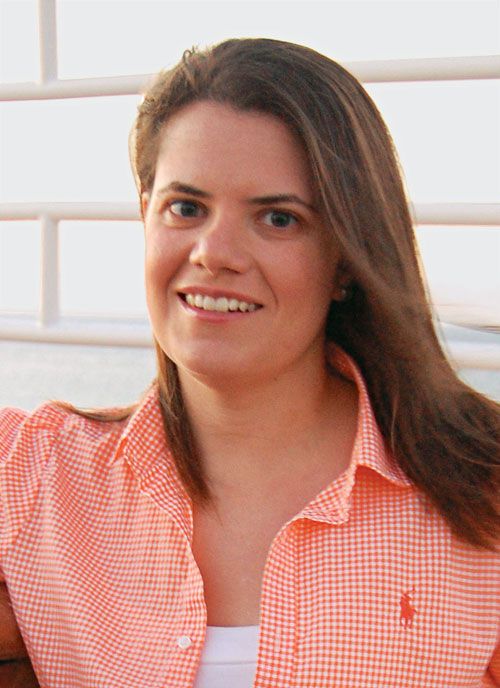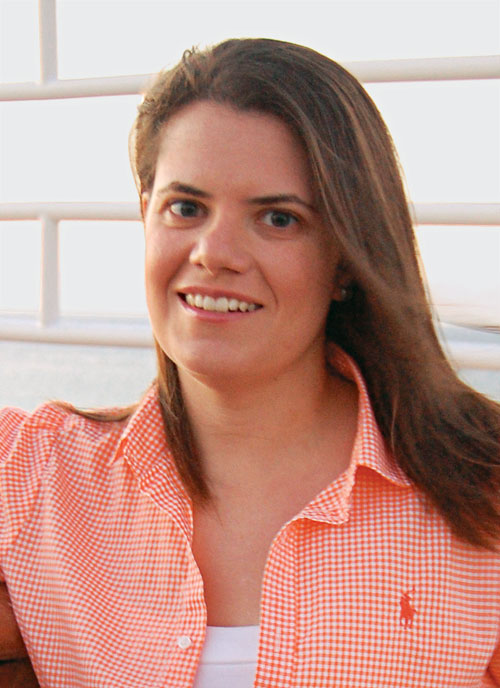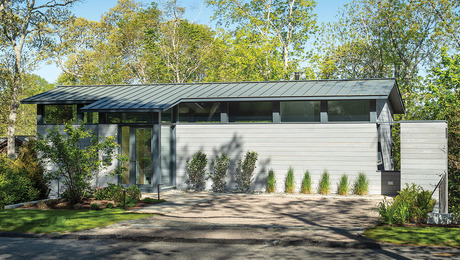A Conversation with Marianne Cusato

I talked with Marianne Cusato for the Tailgate department in issue #213. We printed 7 questions and answers with her in the magazine; the remainder of the interview is below.
We also interviewed her in 2008 for the HOUSES issue (#195); listen to a podcast of that interview.
————————————————————————
Who are your role models?
I love traditional forms, but I don’t believe that every building needs to be 100% historically correct as long as it is based on the principles. There’s a wide range of people I look at. It’s hard to pick out any one.
What types of projects did you work on when you got started professionally?
I got started at Grenfell Architecture in Charlotte, N.C. It was a really fantastic place to have a first job. Milton Grenfell did all classical and traditional work—high-end residential, but we also worked on architecture within master-planned communities and as a consultant to the zoning department. That introduced me very early on to Andres (Duany) and the type of work he does, so there was a balance: the big picture and then the details as well. And it was a small firm, so it allowed me to be part of the whole process of everything and to see a complete picture of what it was to practice. I think I got way ahead in terms of my engagement in things because I was able to see all aspects and also at the range of scales. It was a fantastic foundation for where I am now.
Have you gotten any feedback from people who live in the Katrina Cottages?
The people that we talk to love them. Unfortunately, I feel a little removed from some of the homeowners because we sell through Lowe’s in an automated system, which means that I have less contact with the end users, so I don’t even really know where they all are. We’re in the process of trying to do some outreach and figure out where they are. The people we’ve talked to are thrilled with them and they’re happy. From the sounds of it, they’re doing really well.
You grew up in Alaska, and now you live in Florida. How have these disparate locations influenced your work?
Being from Alaska, I understand the importance of environment. Alaska has an amazing natural environment, but the built environment has never quite measured up, although they’re making some efforts and doing some things that are pretty cool and pretty fantastic up there.
Anchorage as a built city has been the victim of bad timing because it’s a very young city, and so the real money started flowing up there in the ’60s, ’70s, and ’80s when every built city architecturally went through a very dark period.
When established cities came out of it, they had these old sections to fall back on as the core of the city, but Anchorage didn’t have that core. It was too young of a city to be built when everybody else was building the good stuff. It’s an interesting place and an interesting dynamic, and I think that as even when I was growing up, having no education to explain to me why I felt certain ways, I knew that there were things about that built environment that just were not as successful as they could be: lots of strip malls, lots of sprawl. I took a trip to Washington D.C. when I was in high school, I took a trip to Berkeley, Calif., and I remember immediately feeling that these were great places. I couldn’t articulate why I felt better in an environment where there was a streetscape and where you could walk, where there were street trees.
It was interesting because at the same time that the built environment was so grim in Anchorage, the natural environment—the beauty of the place—is so strong. There’s a huge identity of place that comes with that—something that I understood and enjoyed and loved.
Being in Miami now, it’s the opposite end of the spectrum. I’ve come to Miami through a bunch of other places. I went to school in northern Indiana at Notre Dame, and Charlotte, N.C., then I lived for quite a while in Manhattan. I personally would find it hard to live anywhere that wasn’t an active, urban environment. It is the surroundings that I feel most comfortable in. It is important for me to be able to walk to my daily needs. This bleeds over into my work because I appreciate this kind of place and want to contribute to places that are authentic and feel right and where people want to live.
[[[PAGE]]]
What lessons should we be learning from the ongoing housing crisis?
As much as it’s a crisis, I think it’s for the better. We will come out of this stronger. If it hadn’t been the financial collapse, it would have been something else that had driven us to this point. There are a lot of interconnected pieces. We’re completely dependent on oil because our cities are designed in a way that you have to be in a car for a substantial period of time to meet your daily needs, and that’s the reality for most Americans. If we designed communities in such a way that the homes were closer together so that we had a mix of uses, connected streets so that it wasn’t all about collector streets and arterials and then cul-de-sacs on the other side, we would not require as much oil on a daily basis. The solutions to our problems are not bad; they will actually increase our quality of life. We’re talking about place-making now and about building communities that you can do more things in because you have more time. So there’s a lot of positives that can come out of this.
How do you get people to shift their mind-sets to embrace that?
Does anyone want to sit for two hours one way in a car going to work? Find me that person. And who wants to have a house that’s exorbitantly expensive to heat and cool? Again, please find me that person. Look at what we’ve really gotten from our current setup. It was a vicious cycle of everything getting a little worse one bit at a time. In the building industry, when people were guaranteed sales just by finishing, where homeowners didn’t have to think about what they purchased because they were guaranteed to be able to flip it, there was no consequence to anything we did. We got to thinking that what we were doing was what we wanted, but it was really just what we were doing. Are we doing this because it works, or are we doing this because it’s what we’re doing? Why would you bother changing when you’re guaranteed financial success?
The reality is that some people really do like a sprawled, cul-de-sac suburban lifestyle, and that’s fine. But a lot of people don’t, and they were sort of carried along with it, and those are the people that we really want to be able to show that there’s another option. It’s not about convincing people that don’t believe or are desperate to have the old ways. It’s about offering solutions to the ones that wasn’t quite working for. And that’s a lot of people.
What is the most difficult thing about being an architect in today’s building industry?
I think that’s the same across the board in any industry: that we’re all working a lot harder and getting paid a lot less. I also think that that creates some opportunities. Basically, my business plan up until the bad economy was to sit and just wait for the phone to ring. That was all I needed to do to be guaranteed to get work. And then I had to think a little bit more, and because of that, I started working on the New Economy Home. It didn’t start with a client saying, “I need a house.” It started on the other end with me thinking, “How do we address this economy? How do we live today?” There are a lot of challenges, but there’s also a lot of opportunities. I think people who are creative with how they approach things will do fine.
What’s your perspective on sustainability and building green?
I think the greenest thing you can do is build a building that people love in a place that people want to be. There’s a lot of kooky stuff that’s come out of the green world that is technically green but doesn’t necessarily result in a love of place. I think that anything we can do to build more sustainably is crucial, but we need to think about it holistically. There’s a lot of green-washing out there. Who knows what green is? I don’t even know. The word has become almost meaningless at this point. It’s important to be sustainable, and you can do it within a package that looks normal. A house doesn’t have to have a windmill on the roof or solar panels if you build a really good building envelope with mechanical systems that are sized appropriately.
A lot of times, strangely enough, the biggest problem with mechanical equipment is that there’s too much of it. We went through this phase that more is better, just put it in, don’t think about it, and so we can pretty easily without too much extra cost actually design and build buildings that are really solid and have good envelopes and are easy to maintain over time. If we can focus green on that, then we’ll be in great shape.
Fine Homebuilding Recommended Products
Fine Homebuilding receives a commission for items purchased through links on this site, including Amazon Associates and other affiliate advertising programs.

A House Needs to Breathe...Or Does It?: An Introduction to Building Science

Homebody: A Guide to Creating Spaces You Never Want to Leave

All New Bathroom Ideas that Work

Marianne Cusato won acclaim for her design of one of the compact and affordable Katrina Cottages. She recently unveiled her New Economy Home, an adaptable, energy efficient 1,800-sq.-ft. house.

























